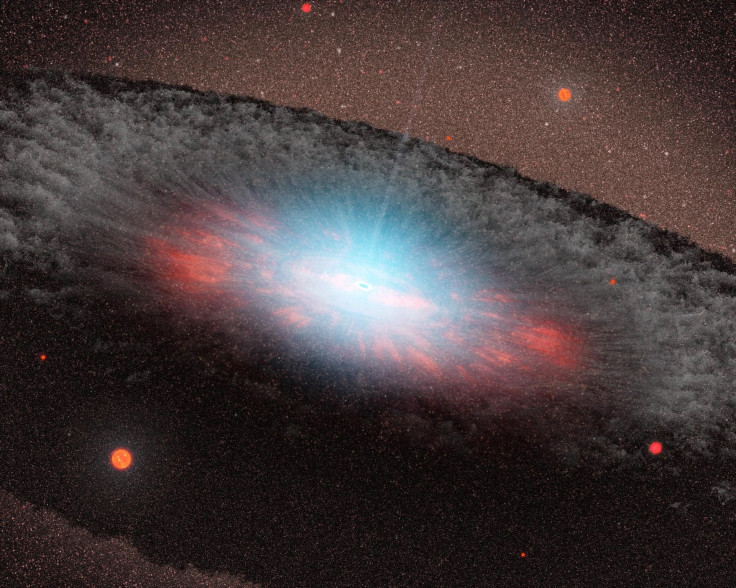Two Supermassive Black Holes Found In The Remains Of Destroyed Galaxies

Just because a black hole is enormous doesn’t mean the galaxy around it has to be. Astronomers have found two new supermassive black holes at the centers of “ultracompact dwarf galaxies” in the constellation Virgo, and they think this type of system is fairly common.
Those black holes are so big compared to the rest of their galaxies that one of them is 13 percent of the galaxy’s total mass and the other is 18 percent, according to a study in The Astrophysical Journal. With such powerful black holes, it’s possible that although the galaxies are so small, they were once massive but were torn apart by other galaxies and their pieces swallowed up.
Read: Baby Stars Are Eating Up This Galaxy’s Fuel
Galaxies collide often in outer space, with their gravity pulling away bits of one another.
“Our Milky Way is eating up galaxies as we speak,” senior author and Utah professor Anil Seth said in a statement from the university. “Our general picture of how galaxies form is that little galaxies merge to form big galaxies. But we have a really incomplete picture of that. The ultra-compact dwarf galaxies provide us a longer timeline to be able to look at what’s happened in the past.”
The new pair of tiny galaxies — called ultracompact dwarfs because they have many millions of stars packed tightly in only a few hundred light years of space — are the second and third that University of Utah scientists have found with supermassive black holes at their centers. They suggest that this pattern means it is probably a common occurrence.
“It’s pretty amazing when you really think about it,” lead author Chris Ahn said in the statement. “These ultra-compact dwarfs are around 0.1 percent the size of the Milky Way, yet they host supermassive black holes that are bigger than the black hole at the center of our own galaxy.”
In one of the galaxies, VUCD3, its black hole has a mass that’s the equivalent of 4.4 million Suns. The other, M59cO, has a black hole the mass of 5.8 million Suns. That’s compared to the mass of the supermassive black hole at the center of the Milky Way, which is only 4 million Suns and wrangles billions of stars.
While in the ultracompact galaxies the black holes at the center account for a large percentage of the total mass, our hometown black hole is less than .01 percent of the Milky Way’s mass.
Black holes famously suck because their gravitational pull is so strong that nothing can escape their grasp, not even light — hence why they would appear as a point of blackness. They are formed when a star collapses, with the strong gravity coming from the density of the star’s mass being packed into a relatively small space.
Supermassive black holes are a danger lurking at the centers of all the biggest galaxies, but just as they take light, they also give it: Scientists have found that as one of those monsters gobbles up matter in its path, it expels gas — a supermassive fart of sorts — and creates a wind called a galactic outflow in which baby stars can be born.
See also:
© Copyright IBTimes 2025. All rights reserved.




















